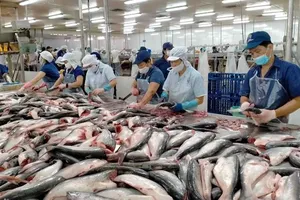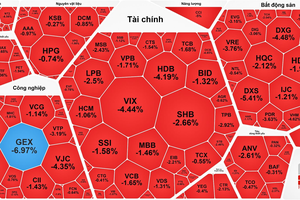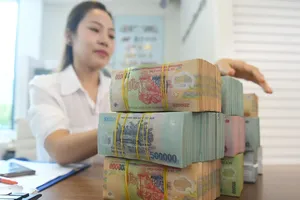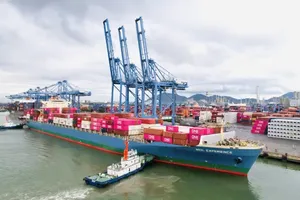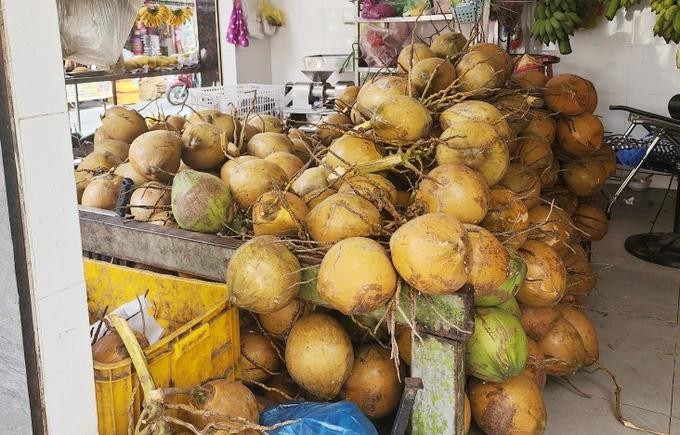
Coconut consumption in Ho Chi Minh City and the southern provinces rises sharply during the hot season. However, even with the high prices being paid, warehouse owners are still facing frequent difficulties in buying enough coconuts to meet the demand.
Owner Nguyen Huu Nho of a coconut shop on Pham Van Chieu Street in Go Vap District said that at the start of 2025, the shop sold coconuts at VND11,000 per fruit. By the end of March, the price has risen to VND13,000 per fruit. After deducting transportation costs, the shop sells the coconuts for VND16,000 each, yielding a profit of just VND1,000 to VND1,500 per fruit.
Similarly, owner Ho Thi Ha of a fruit store on Le Van Khuong Street in District 12 said that the amount of fruits imported to the store has decreased by 30 percent compared to 2024, due to prolonged heat and limited supply from gardeners in the Mekong Delta.
Some special varieties of coconut priced at VND20,000 per fruit are currently out of stock. This price reflects a 100 percent increase compared to mid-2024.
According to General Secretary Cao Ba Dang Khoa of Vietnam Coconut Association, fresh coconut prices have surged 110 percent year-over-year, while dried coconut prices have soared 150 percent. Coconut prices have seen significant volatility throughout the year so far.
Moreover, importers from China, Malaysia, and Thailand are actively buying Vietnamese coconuts, creating fierce competition. Particularly, the opening of the US and Chinese markets to this product has provoked the interest of investors worldwide.
In Ben Tre Province, local authorities are expanding green coconut cultivation to build a sustainable coconut value chain in response to rising demand.
General Director Nguyen Dinh Tung of Vina T&T Company - a leading fruit exporter in Vietnam - said that since China signed the protocol for coconut exports, the demand of this market has increased sharply. Each month, Vina T&T Company exports about 30 containers of this item to China.
According to the Department of Agriculture and Environment of Ben Tre Province, at present, the output of coconut which is out of season is decreasing by about 50 percent.
In addition, at this time, coconut processing companies have many export orders, especially from the US and European markets, so they are in great need of raw coconut. In addition, the prices of by-products such as coconut water, coconut shells, coconut fiber have also increased, contributing to pushing up the price of raw materials.
To date, Ben Tre Province has had more than 133 coconut growing areas granted codes and 14 enterprises granted packaging codes for export to China. The total coconut growing area of the province is currently about 80,000 hectares, with an output of nearly 700,000 tons per year. Of the amount, nearly 80 percent of the area is dry coconut, the drinking type accounts for more than 20 percent (about 16,000 hectares).
Coconut farming is the primary means of livelihood for farmers in Ben Tre Province.

